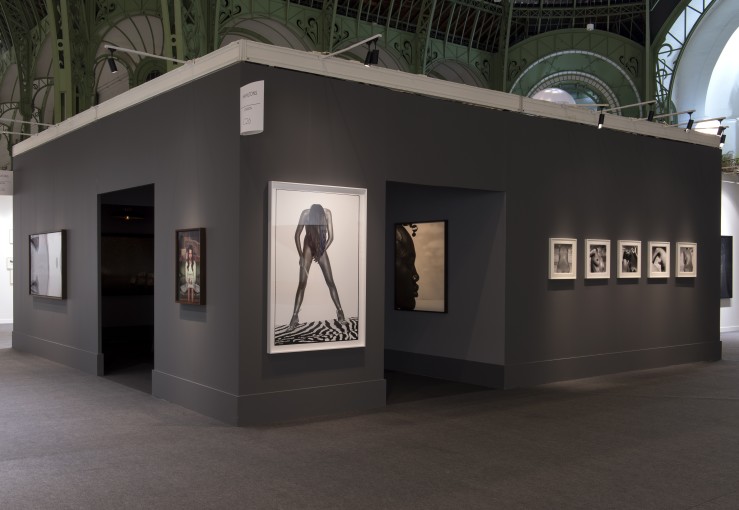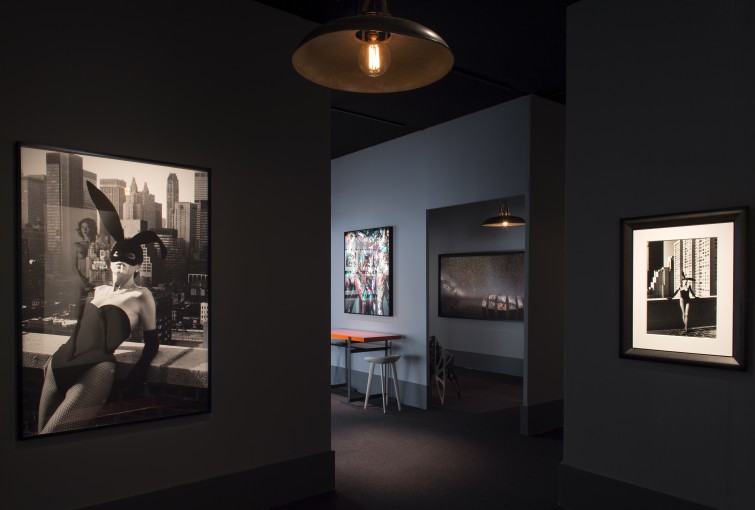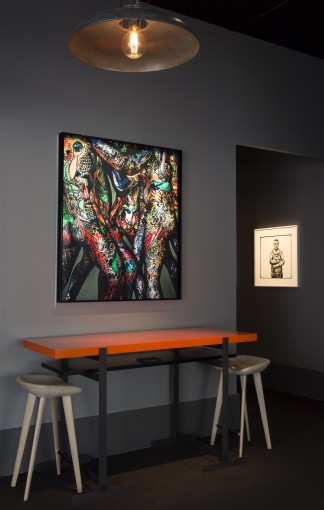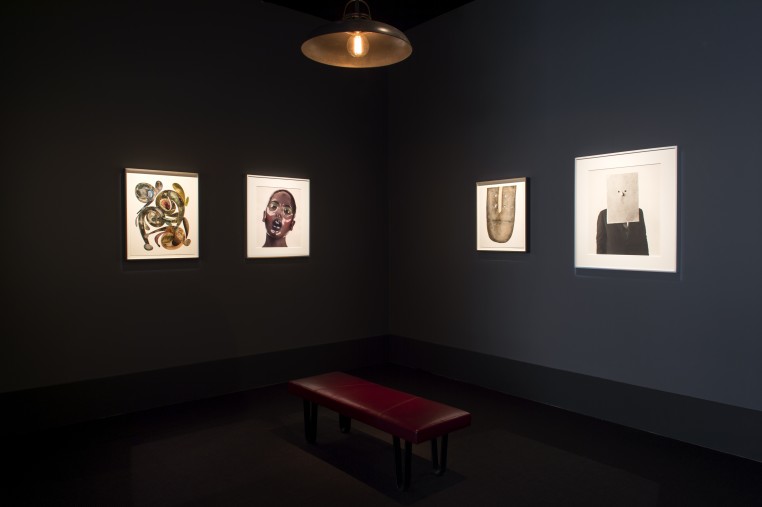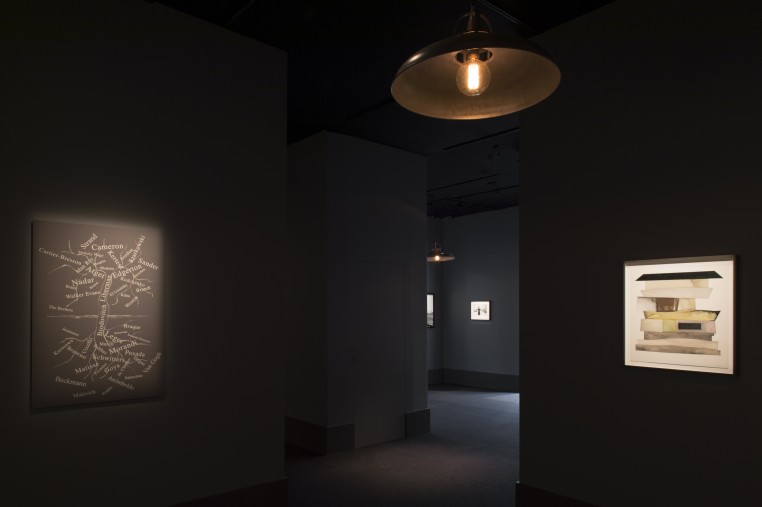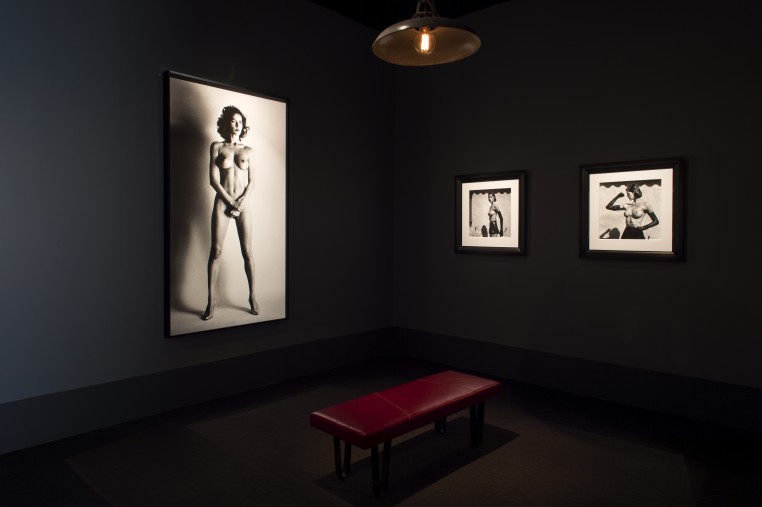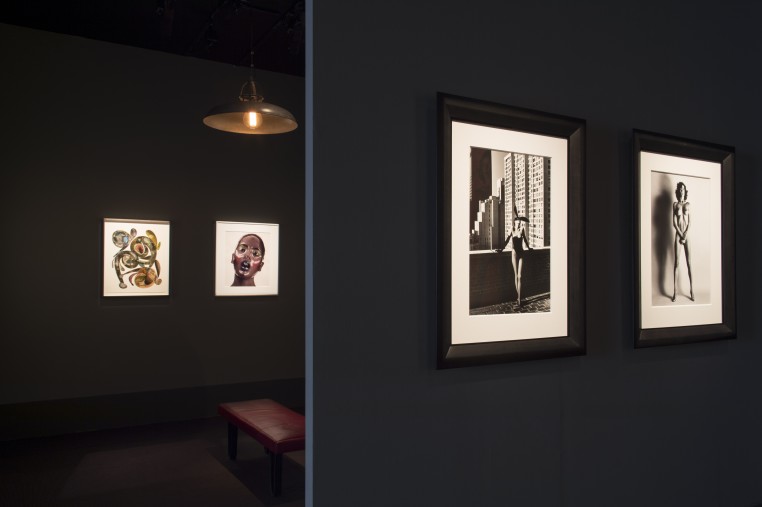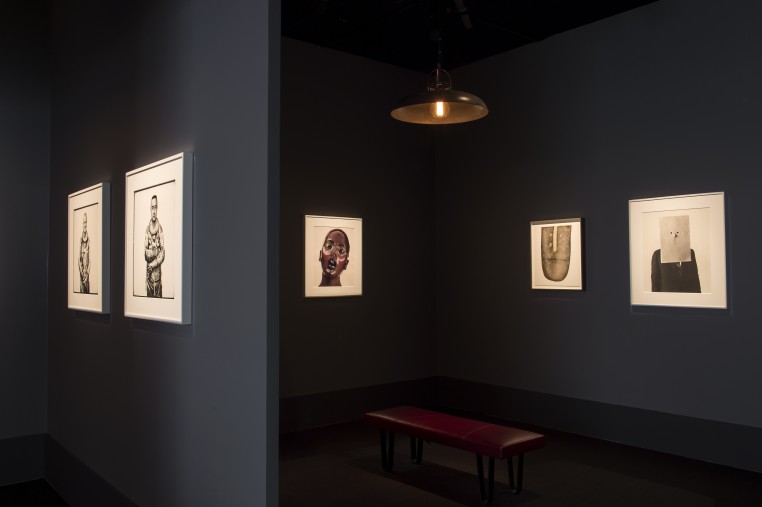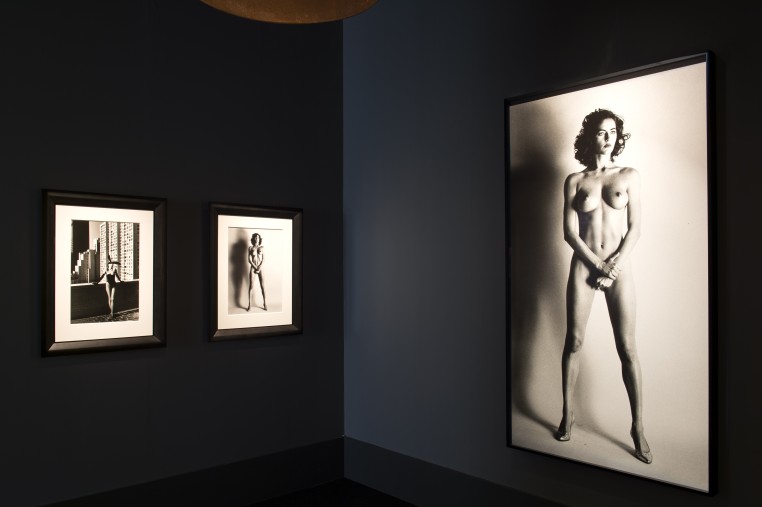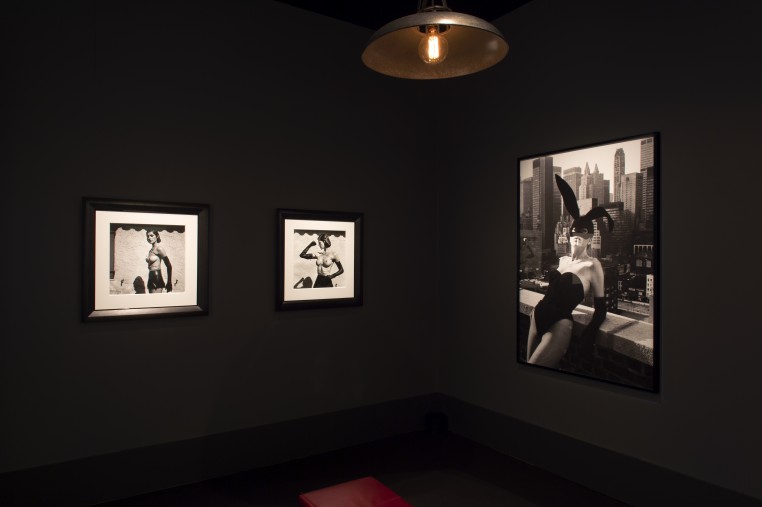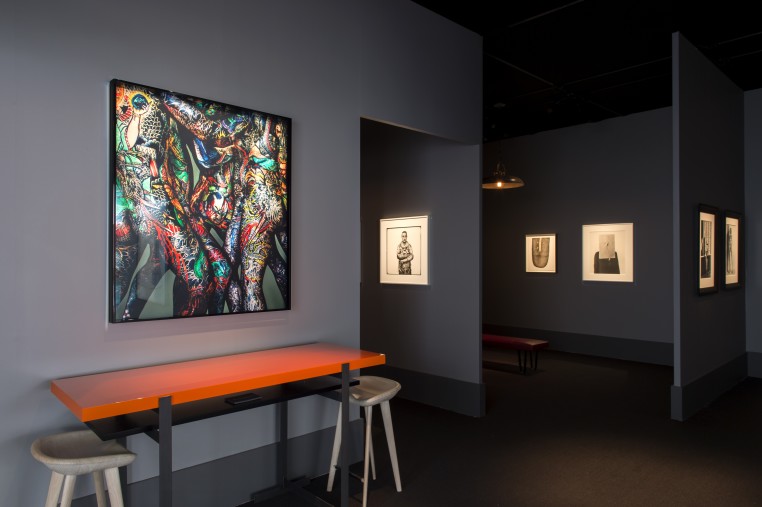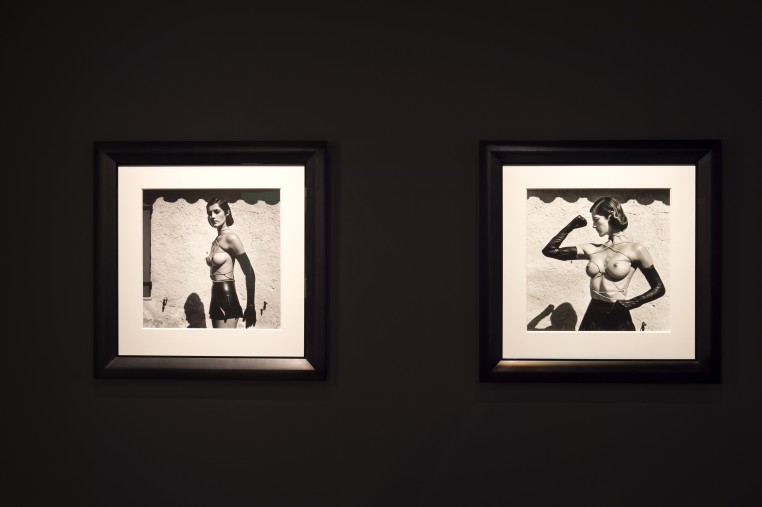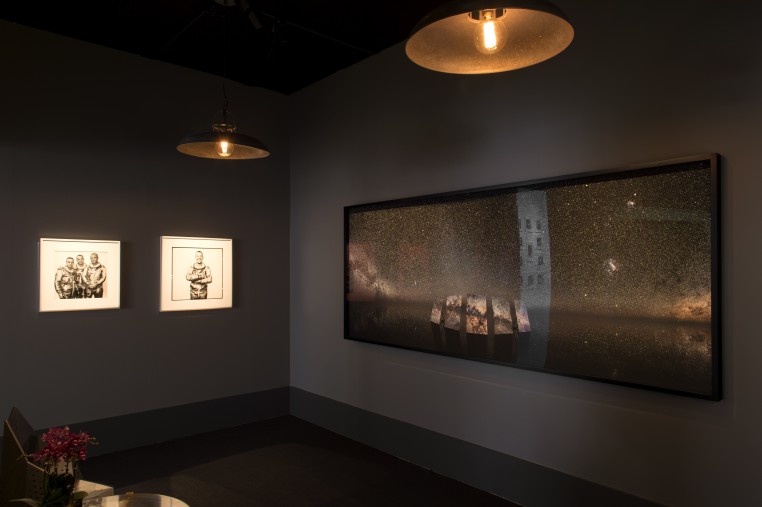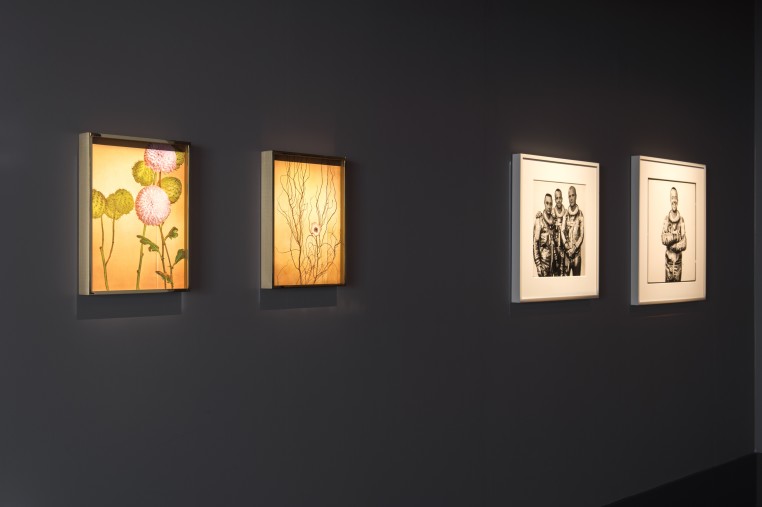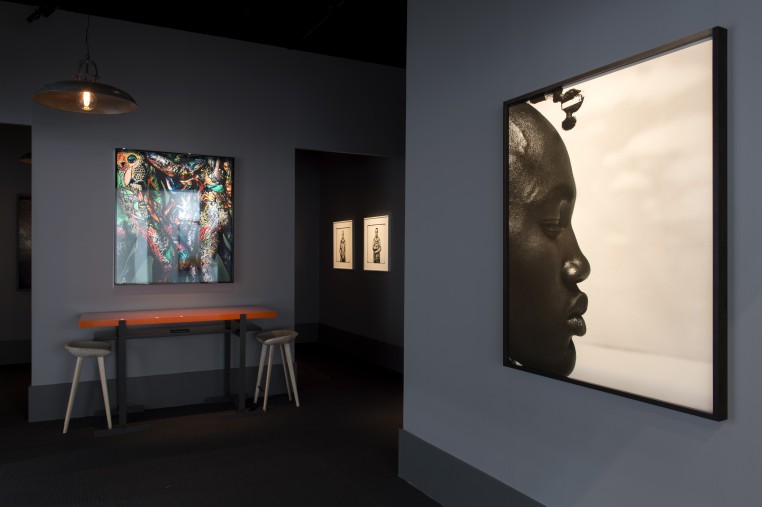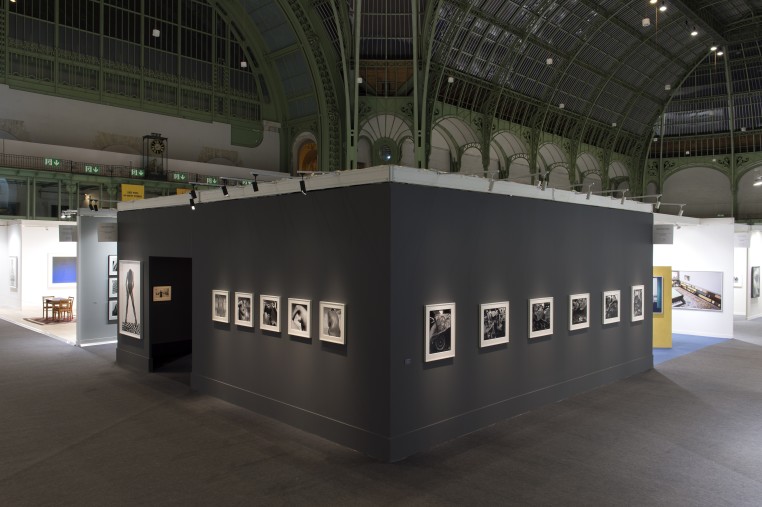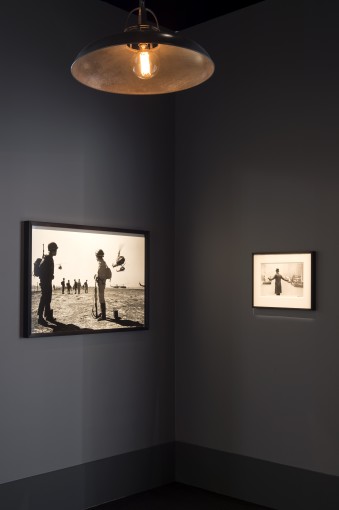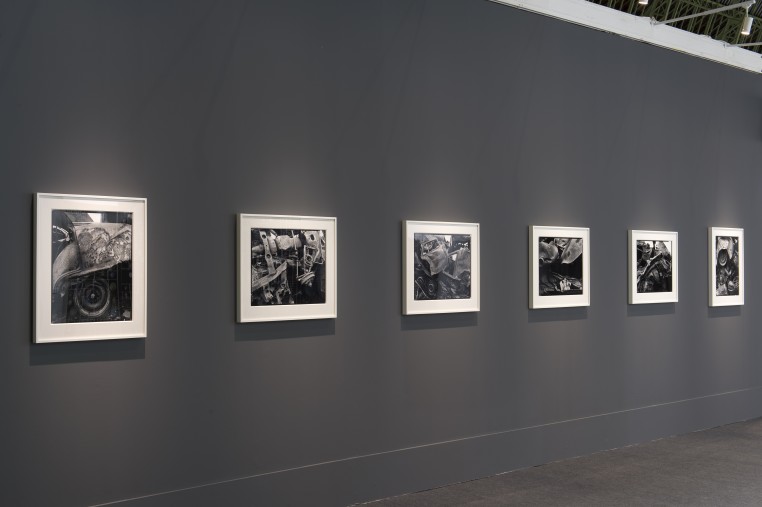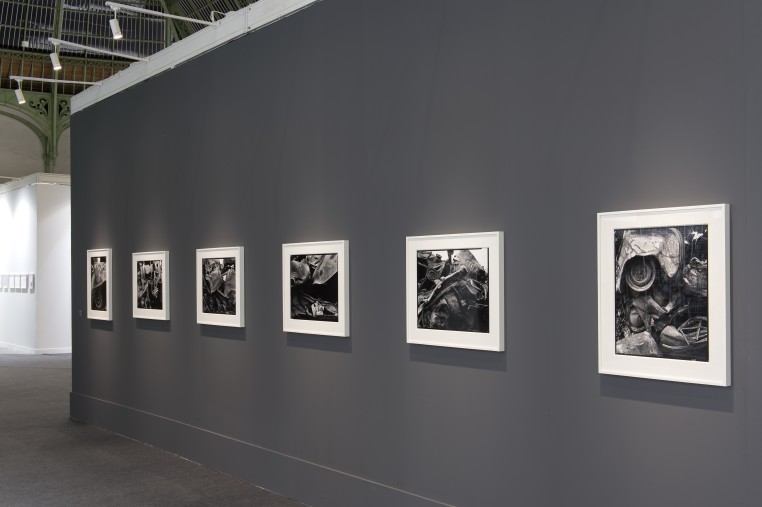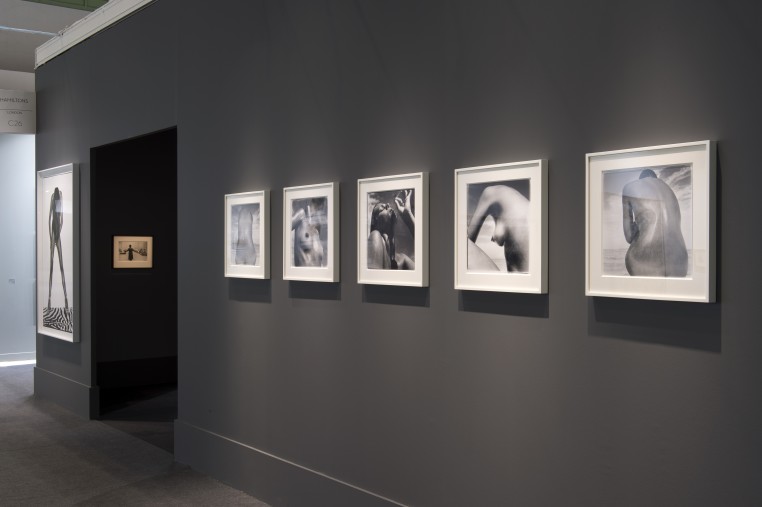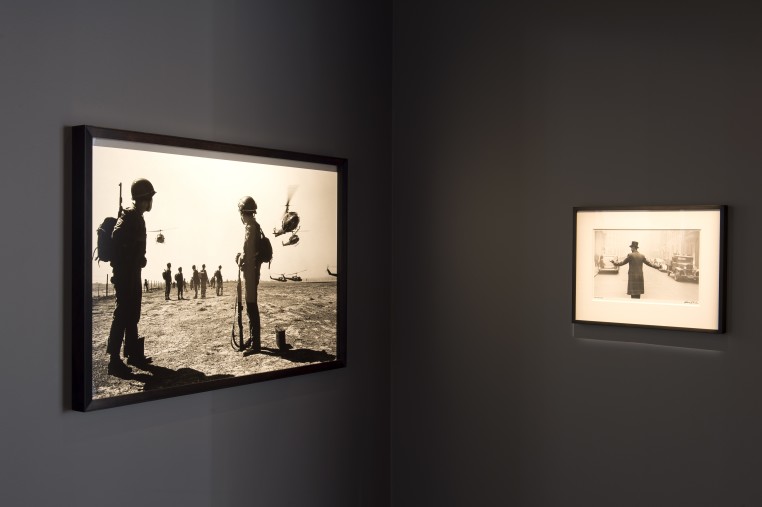At Paris Photo 2019, Hamiltons’ exhibition was divided into four main sections.
In the first room, we celebrated the 50th anniversary of man setting foot on the moon with photographs by Richard Avedon of three members of the ‘Mercury Seven’, as well as a picture of Apollo 11 by Hiro and a new picture of the reflected Milky Way by Australian photographer Murray Fredericks.
In the second room, we juxtaposed the paintings of Irving Penn with some of his well-known photographs, as an insight into the way the artist and photographer thought and worked.
In our third room, we presented rarely or never-before-seen prints by Helmut Newton, pairing variants with their more famous originals.
In the final room we show new work by Mario Testino and Don McCullin alongside photographs by Robert Frank and Herb Ritts.
The outside of our booth showed Erwin Olaf, Philippe Garner, Daido Moriyama and the complete series of ‘Interstate’ pictures by Richard Avedon.
Highlights
Helmut Newton
A highlight of Hamiltons presentation at Paris Photo is a rare, most likely unique variant of Helmut Newton’s Big Nude III, Henrietta, 1980.
From 1987 – 2000 Rudolph ‘Rudi’ Kicken (Kicken Gallery) was Helmut Newton’s worldwide dealer and it was a happy partnership during which Helmut made a number of photographic gifts to Rudi. One gift was a variant of Big Nude III, now referred to as the “Kicken Big Nude”. In 2000 the professional relationship between Rudi and Helmut ended, but Rudi kept the picture in his personal collection. In October 2003 the Helmut Newton Foundation opened, housing several thousands of prints from Newton’s personal archive. Helmut passed away in 2004 and the “Kicken Big Nude” was sold to a private collector before Rudi Kicken himself passed away in 2014.
Hamiltons Gallery began working with Helmut Newton in 1985, still works extensively with his pictures and remains an authority on his work. However, the gallery has never come across this variant in print or publication. The print came to the gallery’s attention earlier in 2019 and the gallery has since consulted with those who were close to Newton and his wife June, all of whom confirm never having seen or heard of the variant chef-d'oeuvre. The signed label accompanying the print refers to it as Artist Proof 1. However, The Helmut Newton Foundation has further verified that it has no prints of any size of this variant image in its collection. It is likely that this is the only print that was ever made of this image.
The “Big Nudes” series is one of Newton’s most celebrated works. Big Nude IIIis the iconic image which graces the cover of the Taschen Sumo book featuring the series. In the oversized format, the image is the most desirable and valuable of them all. This variant, with its fascinating history, is a major discovery.
Mario Testino
These previously unseen works by Mario Testino, the renowned fashion and portrait photographer, are a preview ahead of Hamiltons upcoming exhibition Mario Testino: East at the gallery in London, 19 November 2019 – 18 January 2020. Testino’s most recent body of work is an artistic exploration of cultural identity and part of a wider project to highlight diverse beauty. As he travels the world, Testino reveals what makes culture in each country special, challenging us to find a more sustainable balance between change and tradition. This series is comprised of two subject matters; Japanese flowers on golden screens and vividly tattooed men, intricately entwined. Through the distinctive lens of Testino, these dazzling images capture two Japanese traditions at their most vibrant.
The flower still lifes are inspired by traditional ‘Ukiyo-e’ (“pictures of the floating world”), one of the most admired genres of Japanese art. Each of the seasonal flowers captured by Testino signify distinct ideas, such as truth, splendour, humbleness and sincerity, culminating in a floral display rich in Japanese heritage. The backdrop of the golden screens, used in Japan as luxury ornaments for ceremonial occasions, has a reflective effect, showcasing the delicacy of the flowers.
In contrast, Testino photographs men tattooed by the most famous Irezumi tattoo artist in Japan, Horiyoshi III. As a master of the traditional Irezumi technique, which translates as ‘inserting ink’, Horiyoshi III is the second tattooist to be granted this name, an honorific title passed from master to apprentice. Today he is legendary, particularly as he tattoos with no plan in advance, relying on his skill and instinct. The special Nara ink requires a painful and time-consuming process, resulting in elaborate designs the tattooist controls, rather than the client. Tattoos have been discriminated against in Japan since the Meiji period, in the late 19thCentury, when the government outlawed tattoos, and Irezumi became associated with criminality and the Yakusa (Japanese mafia). In portraying the artistry of the tattoos, bodies interlocked, Testino exposes this incredible tradition in all its glory.
50thAnniversary of the Moon Landing
A final highlight is a room dedicated to celebrating the 50thanniversary of man setting foot on the moon.
Photographs by Richard Avedon, an eminent chronicler of the second half of the twentieth century, capture three members of the ‘Mercury Seven’ in 1961 revealing Avedon’s unique style of portraiture. He was fascinated by photography’s capacity for suggesting the personality and life of his subjects.
The room also features a photograph of Apollo 11 taking off in 1969 by Hiro, an apprentice of Avedon before he rose to extraordinary fashion photography heights as an independent photographer for Harper’s Bazaar.
Finally, a new galactic work by Australian photographer Murray Fredericks captures an extraordinary view of the Milky Way from the infinite landscape of Lake Eyre, Australia. This will be the only Arrayphotograph, from within Fredericks’ larger Saltseries, to capture the night sky. By introducing mirrors two years ago into the previously undisturbed landscape of his epic Salt pictures, Fredericks draws the gaze of the viewer outwards to the immediate environment and the cosmos.

